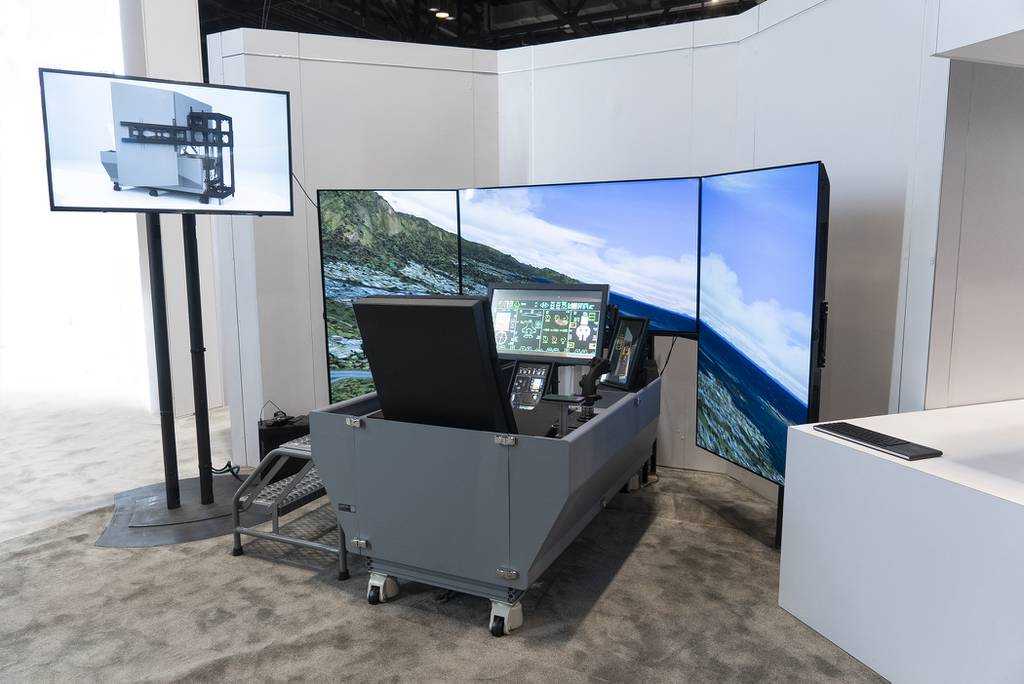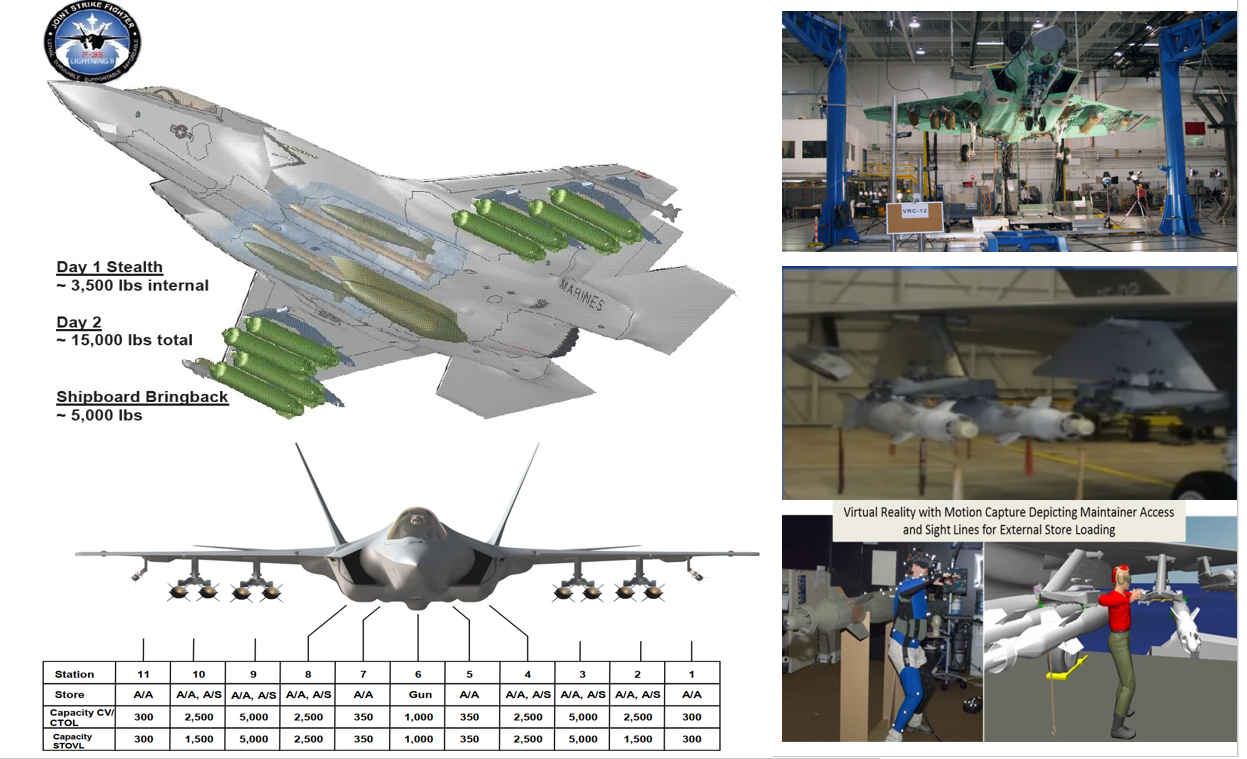
No, los aterrizajes SRVL no son en ángulo y ya se han practicado en el Queen Elizabeth. Son útiles en determinadas circunstancias.
Moderadores: Lepanto, poliorcetes, Edu, Orel

Atticus escribió:Chema escribió:Lo de aterrizar lo decía por esa carrera corta que hacen los ingleses, no fuera que se pasara de largo
En realidad, las carreras de aterrizaje se realizarían en angulo, asi que no tendria que pasar por la rampa. Sumemosle que no estan aun homologadas, que se encuentran en fase de estudio. Resumiendo, que se la pego al despegar. ¿Es posible que el avion no tenga un indicador de que el fan esta funcionando adecuadamente? Eso habria resuelto este peligro desde el principio.
MRT LITE runs the same software in a pared-down footprint — 90% less hardware, the company noted, with eight MRT LITEs fitting within the allotted space of a full mission simulator.
The LITE version has three screens for forward-looking views only, “but there’s a need for more capacity at a number of those [global training] sites. So based on that need, we decided to go ahead and embark some internal investments to shrink the footprint associated with the full-mission sim and created a device, a family of devices, that will provide capacity at fixed sites,” Etz said.
In addition to the reduced views, the smaller version excludes some switches and other interfaces needed for emergency-only procedures, among other changes. But Etz, a former U.S. Navy fighter pilot, said the trainer covers 75% of the F-35 mission set, including all the beyond-visual-range tasks at the heart of fifth-generation fighter missions.

No, los aterrizajes SRVL no son en ángulo y ya se han practicado en el Queen Elizabeth. Son útiles en determinadas circunstancias.
Joint Program Office Director Air Force Lt. Gen. Eric T. Fick acknowledged that high operating costs are “an existential threat to the F-35.”
But Fick, in a wide-ranging discussion with reporters in September, also said the F-35 is already close to “delivering fifth-gen capabilities at high-end fourth-generation costs.”By comparison, the F-15EX and F/A-18E/F cost about $29,000-$30,000 per hour to operate, and the new sustainment contract stipulates that Lockheed will get F-35 operating costs down to $30,000 per hour by the end of 2023. The Air Force wants the F-35 hourly cost comparable to the F-16, historically around $22,000 per hour, but in fiscal 2020 it was up to $27,000 per hour.
The $30,000 per hour goal by 2023 is for the entire air vehicle, including the Pratt & Whitney F135 engine, Fick noted, but sustainment contracts with Pratt are negotiated separately from Lockheed Martin. The grand number includes “a placeholder for propulsion,” he said.
The F-35 program is transitioning the troubled Autonomic Logistics Information System—ALIS—to a new system called the Operational Data Integrated Network (ODIN).
The ALIS has “historically … been a trouble spot,” F-35 Program Executive Officer Lt. Gen. Eric Fick acknowledged. Two years ago, the plan was for a swift turnover from ALIS to ODIN, but now it will be more of an “evolutionary transition,” he said.
“ODIN has three parts,” he explained. “It’s about hardware, it’s about an integrated data environment, and it’s about software.” The hardware on which ODIN will be hosted is already being fielded and upgrades to ALIS are being hosted on it.
“Over the next 12 to 18 months, we will be flowing this new ODIN-based kit, or OBK, as we call it, to 14 different installations, replacing their legacy hardware with this new and improved ODIN hardware,” Fick said. The new gear is “90 percent lighter, 70 percent smaller, and about 30 percent cheaper” than the old, bulky ALIS equipment, he noted, while offering “substantially increased performance.”
The system will make the F-35 more affordable due to the “increased performance alone,” Fick said, because maintainers will spend less time keying-in codes and getting false alarms. The system shifts largely to barcode-type inputs rather than laborious entry codes.
This “should allow us, in time” to reduce the number of maintainers involved in ALIS, so they can work on the airplane, or, if they’re contractors, to “take them off contract entirely. So, we’re reducing that workload,” he said.
Fick said the Joint Program Office has established the National ALIS Support Center, where it’s consolidating system administrators “to help them adjudicate problems and challenges from the field to a centralized location,” rather than at various bases. The results so far have been “positive,” he said.
Software deliveries for ALIS/ODIN have also changed from “every two or three years” to “quarterly,” Fick reported. These are aimed at “reducing user pain points,” to make the system “more agile, easier to execute … less people, less time.”
The ODIN will “give us a quantum increase in our ability to support the fleet,” Fick said, while in the near term, “we’re … making ALIS friendlier and easier to use. Putting it on faster hardware is goodness.”
Fick warned that bigger costs are coming with the F135 engine that will severely challenge the F-35 enterprise to keep costs down.
“We do expect to see annual costs for propulsion sustainment to increase,” Fick said, explaining that “we are coming up on the first scheduled overhaul for many of the engines” in the 700-plus inventory of F-35s worldwide. “We will see a bit of a bump on the costs on the propulsion side” as those engines reach 2,000 hours of service.
Fick said that in September, 42 F-35s were down for engine parts, a number which has been fairly consistent in recent months, but he said that number is down a bit. The Air Force canceled some air show demonstrations of the jet to preserve training sorties.
Amanda Glode, Pratt & Whitney’s director of sustainment for the F135, told reporters at a plant visit in October that engine costs will be going up “at the exact point the U.S. services and the entire program want the costs to be decreasing.” Pratt is meeting its contractual requirements that no more than 10 percent of F135s are down for maintenance or overhaul, but only just, at nine percent. The goal is six percent, and through much of the program, Pratt has achieved 4 percent, Glode said.
She also noted that planned investments in the F135’s depot at Tinker Air Force Base, Okla., were raided to pay for other needs, with the result that the depot is “five years behind, in terms of where it should have been based on the program design and architecture.”
Even so, Tinker is accelerating the time it takes to fix engines. Glode said the target is for the depot to generate 40 power modules in a year, a goal that it will “significantly” exceed this year, after only generating 14 modules last year. The time needed to do a power module is also dropping from 200 days to 120.
Pratt continues to make improvements to parts and materials that will keep the engines in service longer, Glode said. She noted a new fan blade coating that’s giving the engine greater resiliency against desert dust, specific to the Middle East, that degrades them with moderate exposure.
Fick said policymakers should be cautious about how they approach reducing sustainment costs, even though he acknowledged they are “the place to go in looking for affordability” on the F-35. While Brown said the Air Force might fly F-35s less frequently to save money, there’s an equation there that may not be obvious, Fick warned.
There’s “cost per tail, per year” and “cost per flying hour,” Fick said, “and you have to look at those both, not just independently.”
To drive down cost per flying hour, “I do that by flying a ton,” he said, which allows amortizing fixed costs over a greater number of flying hours. But “that actually drives my cost per tail per year up, because I’m flying more; I’m burning more gas and using more parts.” Looked at another way, “I can reduce my cost per tail per year by flying less. … [By] offloading sorties to a simulator. But that will artificially drive my cost per flying hour up, because I’m now flying fewer hours and those same fixed costs are amortized over a smaller subset of hours.”
Only a “holistic view” of both of those approaches gives a realistic picture of how to “reduce cost in a meaningful way.”
It’s an equation that will become more important because, Fick said—echoing leaders of Air Combat Command—it will be increasingly difficult to practice certain tactics and operations in the open, where adversaries can see what’s happening. Only “in a synthetic environment” can F-35 pilots really practice their best tricks, away from prying eyes.
The services have to get the Joint Simulation Environment (JSE)—a wargaming system for assessing weapon effectiveness in large force-on-force exercises—working well with the F-35, he said. The F-35’s full-rate production declaration has been put off for two years largely because of delays in integrating the F-35 with the JSE.
“The whole reason the JSE exists is … we knew we couldn’t fly” the F-35 in the open “against the threats we saw off in the future.” To train against the most advanced threats, it must be done virtually, so “those are places where you might choose to offset open-air flight with some simulator work.”
He added that there are “some things you’ll never do in a simulator, and some things you’ll always do in a simulator. And you’ve just got to figure that out.”
14yellow14 escribió:Artículo muy interesante de AirForceMag sobre varios varios aspectos del F-35, costes y problemas
https://www.airforcemag.com/article/can ... -the-f-35/
Algunos extractos interesantes de costes...
14yellow14 escribió:Aproximaciones en ángulo wtf
No, los aterrizajes SRVL no son en ángulo y ya se han practicado en el Queen Elizabeth. Son útiles en determinadas circunstancias.
Atticus escribió:Otro dia hablamos de que al avion le queda mucha cocina para estar terminado de verdad y que eso lo tendra que pagar alguien tambien. Vamos, digo yo...
ascua escribió:14yellow14 escribió:Aproximaciones en ángulo wtf
No, los aterrizajes SRVL no son en ángulo y ya se han practicado en el Queen Elizabeth. Son útiles en determinadas circunstancias.
Pues si es útil solo en "determinadas circunstancias", me he debido perder algo por el camino, porque lo que se decía del SRVL hace años es que aumentaba en cualquier circunstancia el "bring back" del avión unas cuantas libras, 1300/1500, me parece recordar...
Y si a los pérfidos, padres del invento, y con un porta de 65000 tons no les parece útil mas que en determinadas circunstacias, para mi es una pequeña decepción. Yo pensé que, con los años, el aterrizaje rodado se iba a convertir en la norma en los portas tirando a grandes que utilizaran el F-35B...

Usuarios navegando por este Foro: No hay usuarios registrados visitando el Foro y 0 invitados